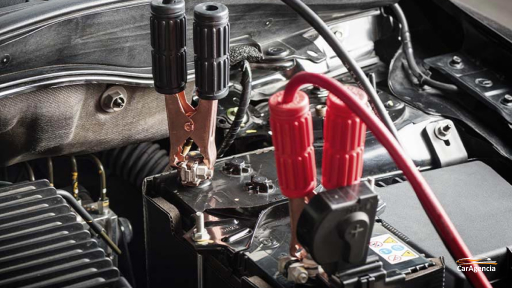 Kiran C
Kiran C
A dead car battery can be a real inconvenience, but a successful jump start can quickly get you back on track. Once your engine is running again, you may wonder how long you need to keep it running to recharge your battery properly. The answer depends on a few factors, but one thing is clear – it’s not as simple as just letting your car idle.
Modern vehicles rely on their alternators to recharge the battery and power the car’s electrical systems simultaneously. With features like infotainment systems, air conditioning, digital dashboards, and power windows all drawing power, the alternator's primary focus is no longer solely on charging the battery.
At idle, your alternator generates little to no excess power to effectively recharge your battery. That's why, to ensure your battery is charging at an optimal rate, you need to do more than just keep your car on.
To recharge your battery effectively after a jump start, you'll need to drive your car and maintain steady, higher engine RPMs. Here's why:
Higher RPMs boost charging output. The alternator only generates significant charging power at increased RPMs.
Highway driving is ideal. Driving at highway speeds creates the optimal conditions for your alternator to contribute to charging.
It’s recommended to drive for at least 30 minutes at highway speeds to provide enough charge for your battery to start the car again. However, this is just the baseline. If you want your battery to reach a more substantial level of charge, you'll need to drive longer. Some experts recommend staying on the road for several hours to give your battery a better boost.
Even with extended drives, note that it’s not possible to fully recharge a deeply discharged battery solely by driving. Your alternator can help restore enough power for short-term use, but a complete recharge requires additional steps. This is where battery chargers come into play.
If you prefer not to rely solely on driving, consider the following options:
Use a dedicated battery charger: Designed for this purpose, a battery charger can safely and thoroughly recharge your battery. While the process may take several hours or overnight, it ensures a more complete recharge.
Solar battery chargers: If you have access to one, a solar charger offers an eco-friendly option to keep your battery topped up.
Seek professional assistance: If you're unsure about your battery's condition, consulting a professional can save time and prevent potential issues down the road.
Jump-starting your car is just the first step in restoring its battery life. To ensure your battery is adequately charged:
Drive your car at highway speeds for at least 30 minutes, ideally longer, to give the alternator time to work effectively.
For the best results, consider using a dedicated battery charger for a complete recharge.
Recharging a car battery might seem straightforward, but understanding these principles will help you avoid getting stranded and prolong the life of your battery.
Take care of your battery, and it will take care of you!